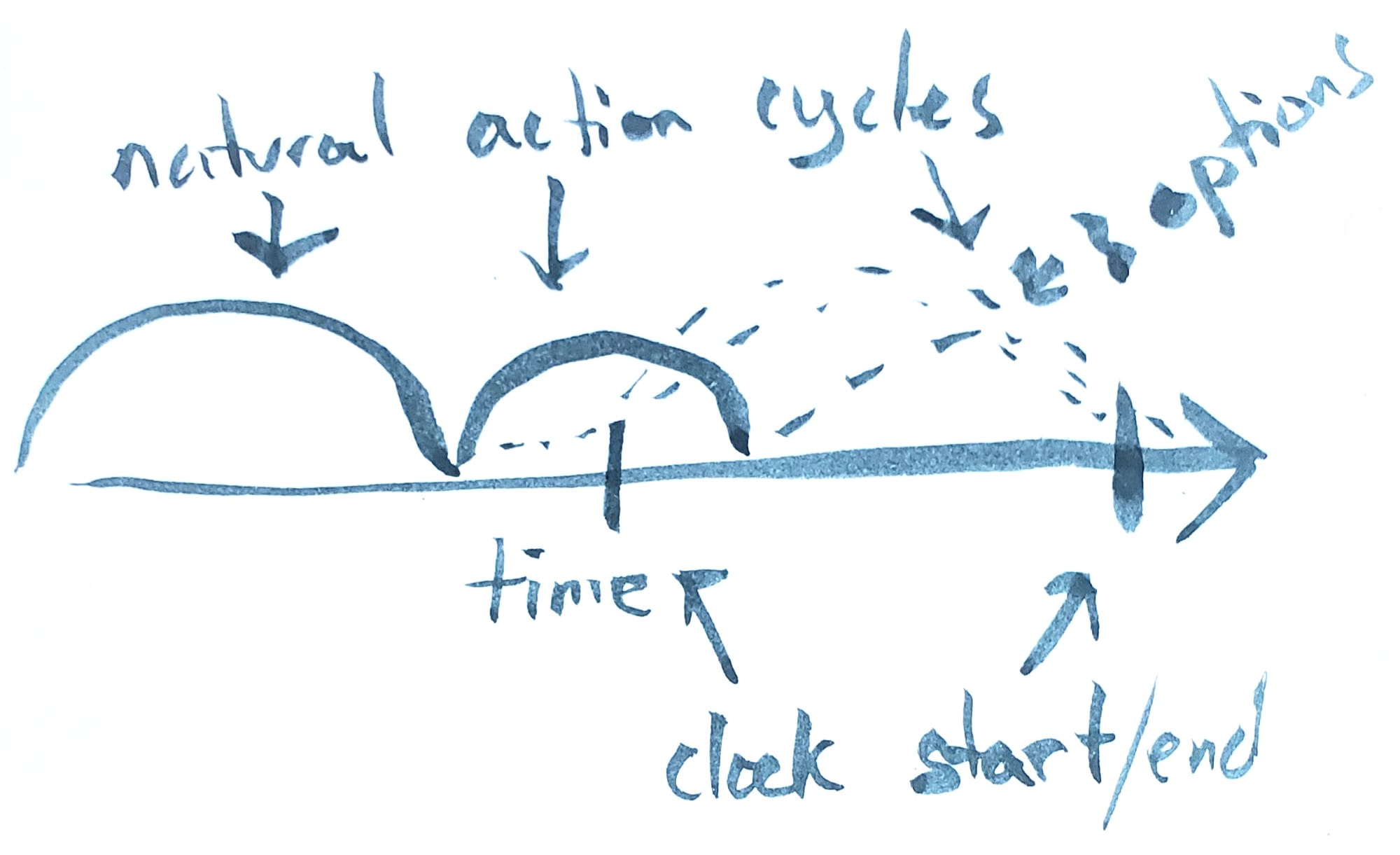Implementing Elegant Timing
This morning I got stuck in the slow lane behind an old man when I was walking down the sidewalk on my way to a Zoom meeting at my neighbourhood coffee shop. Rather than speeding up and hurrying past him, thoughts on my meeting, I did the opposite: slowed down and walked behind him. Enjoying the moment. And hanging to the right side of the sidewalk in case others wanted to pass.
I had the option to do this because I had timing buffer in my morning schedule. I had planned to check my email and do some admin tasks before heading out, but had opted not to. This change had meant I could do things at their elegant and natural pace, rather than rushing from one task to the next in a frazzle. By reducing what I was trying to fit in by 10%, it had made the other 90% of my morning relaxing and enjoyable rather than hectic and stressful.
WHAT IS ELEGANT TIMING?
I consider elegant timing to be action cycles, projects, and flows that interact elegantly and gently with each other, yourself, and the humans around you rather than being rigidly tied to the clock. This often correlates with being late, but it doesn’t have to. Instead, I believe it can be intentionally correlated with being early. This is of personal interest to me, because I’m a big fan of elegant timing, but I’m not at all a fan of being late.
HOW IT WORKS:
There are two key tactics that get combined and applied with a dose of self-control.
Learn to identify the elegant, natural, starting and ending points of an action cycle, visit, project, or meeting. In my experience, all action cycles have these, especially ones that involve other people. The key is to notice them, and be prepared to take advantage of their natural ebb and flow. This reduces resistance, makes things less jarring, and in general seems gentler and more respectful to all involved.
Try to run ahead of the clock, by default. This gives you the opportunity to proactively transition between engagements at the natural, elegant, human-centric points, rather than at whatever more abrupt point the clock and schedule might dictate. If these are working correctly, you can do this and still be on time for things. This can be a magical experience. And one that doesn’t go unnoticed by those around you.
The third ingredient is self-control. If not always easy to implement, this is all pretty straightforward thus far. Where the self-control part comes in is having the restraint not to initiate new action cycles in the necessary gaps, that are going to run longer than the time slot you’ve got, and therefor eat up your necessary time buffer.

KNOWING WHEN TO BREAK THE RULES
As with most good policies, there are times when the right course of action is to ignore it. Some of the times when I tend to throw elegant timing by the wayside: intense and high-value creative action cycles, and unavoidable timing crunches.
Creative action cycles tend to have their own flow and rhythm, and it’s sometimes difficult to get it to mesh with anything else. Because of this, it’s important to weigh the pros and cons on the fly, and decide when to let them run, and when to reign them in, to play nice with those around you, and other duties. If the project is important, and it’s going well, sometimes it’s good to let it take priority and run over-time. If there are other people who are going to be seriously miffed about your absence, or there are things you genuinely need to attend to, sometimes it’s necessary to reign it in.
Timing crunches are best avoided in the planning phase, but sometimes they seem to be unavoidable. When this is the case, I try to keep a positive outlook, and walk the line between efficiency and gentleness.
